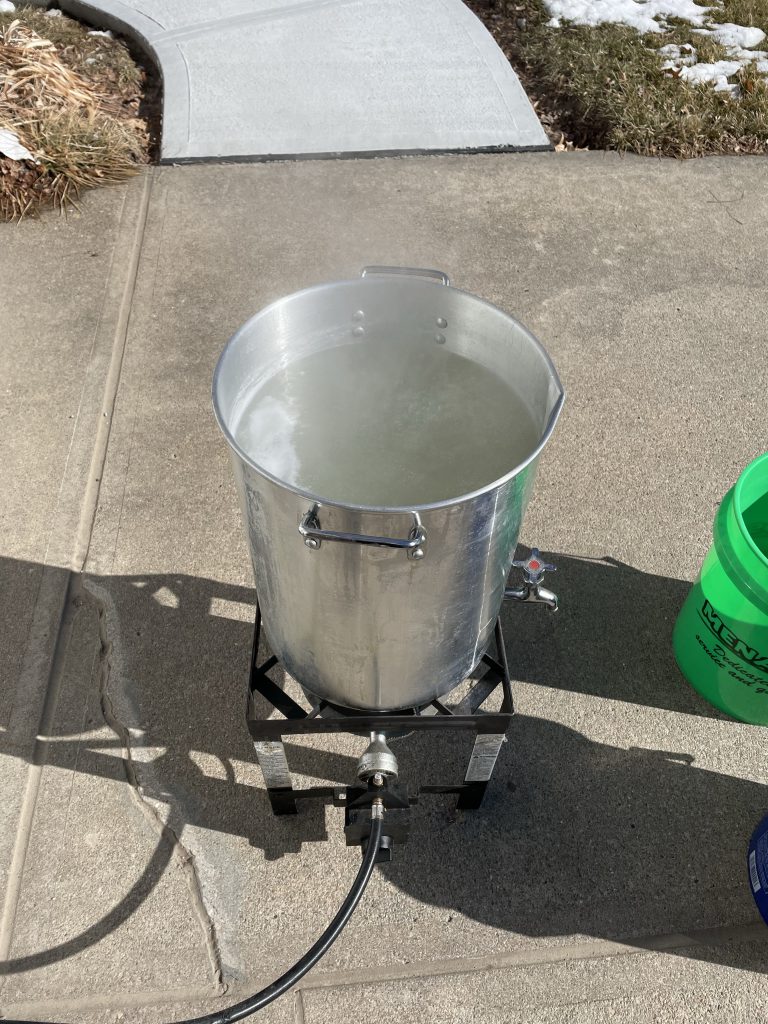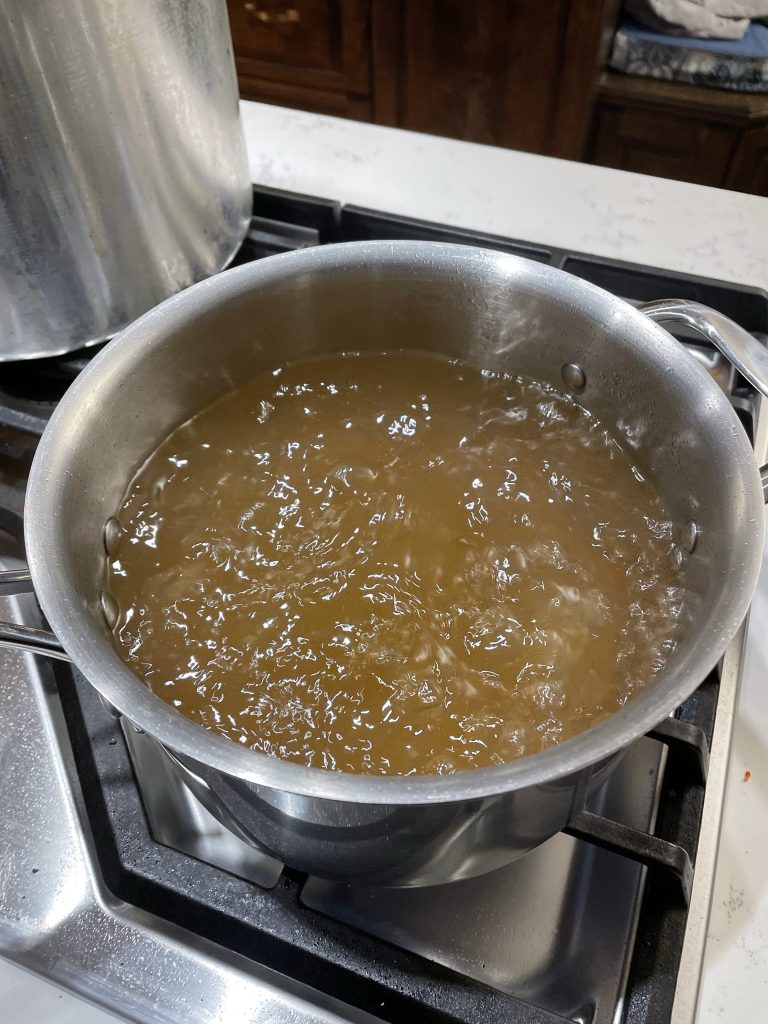Wow, what a journey this has been.
When I started this my goal was just to try it out and see if it would even be possible to get a little bit of syrup from our two larger trees. I was not prepared for what’s happened, even on this tiny, tiny scale. Not to give away the ending, but If I had known what would happen, I’d have prepared better. I’d have had multiple buckets marked in 1 gallon or maybe even 1 quart increments. I’d have filled both of my propane cylinders. I’d have picked up the propane turkey fryer from my son and had it scrubbed out. I’d have probably done the tapping a little differently.
When the weather is warm, I’ve been getting an average of 5-6 gallons of sap per day from the two trees. I can’t say exasperated much, because I’ve been emptying the sap collection bags at varying levels of fullness. My buckets aren’t marked, and sometimes I just empty them directly into the stock pot. The message here is that I’ve gotten a LOT of sap, relative to the amount I thought I’d see, and it’s gone on for days longer that I expected. As I write this it’s 27 degrees F (that’s 2.78 C for my friends outside the US), well below freezing, and it’s overcast. The collection bags were emptied late yesterday; I’ll still have to go empty them again this afternoon. That will be another five gallons or so. But I’m getting ahead of myself; let’s back up to this past weekend.
In my last post, I described my efforts to boil the sap down to make syrup. I can tell you a few things that simply won’t work. Boiling sap on your stove — no, don’t bother trying. Sure, it will work. Eventually. Your house will be a rainforest. We’ve got a good sized place and you could tell the humidity was getting higher, even with the vent hood turned on. And that electric roaster pan? Nope. It heats from the sides, not the bottom, so you can pour in 4-1/2 gallons… and it will steam, but not boil.
I bought a turkey fryer a couple of years back. I’ve never used it myself; it’s lived over at my son’s house where it’s been used to fry a few turkeys. It’s got a stock pot that will hold about 7 gallons (call it 26 liters) and a propane burner. Pete dropped it off for me. That took a little scrubbing to get completely clean and ready for sap duty. As I now had about 8 or 9 gallons of sap, I filled it and fired it up. As the level dropped during the day I’d add in more sap. Seven hours later I’d reduced the first batch down to less than a gallon and brought it inside to finish — it was late and dark, and I’d been having to run out every 13 minutes all day and reset the 15 minute automatic shut-off timer. This was way, way too labor intensive. And how much sap was that? I have no idea. If I were to guess I’d say maybe 9 gallons or so. Maybe more, maybe less, I have no way to keep track.

Once inside on the stove, it took another couple hours to get to the point where the candy thermometer indicated (to the best of its very limited ability) that we might have maple syrup. Unfortunately it’s got nowhere near the resolution I need to see when the boiling temperature reaches 217 degrees. Why 217? Well, at our elevation, water boils at 209.5 F, give or take half a degree based on barometric pressure, so I add 7.5 to that to hit 66% or a little better sugar concentration. It’s an approximation (more on that later).


I finally called it quits when things were looking and feeling like syrup. It bugged me, though, that I didn’t really know for sure how close I was. After cooling it was apparent that the “syrup” was a little thin, and a little light in the rich flavor you’d expect. The next morning Lisa turned the burner on low heat and, not knowing any better, told me about it several minutes later. By the time I got it shut off, it was about to boil over. What we ended up with completely crystallized into a solid tan block of maple sugar once it cooled off. I didn’t take a picture of that, but it was a touch over half a liter of solid maple sugar.
Fortunately all was not lost… more to come.
